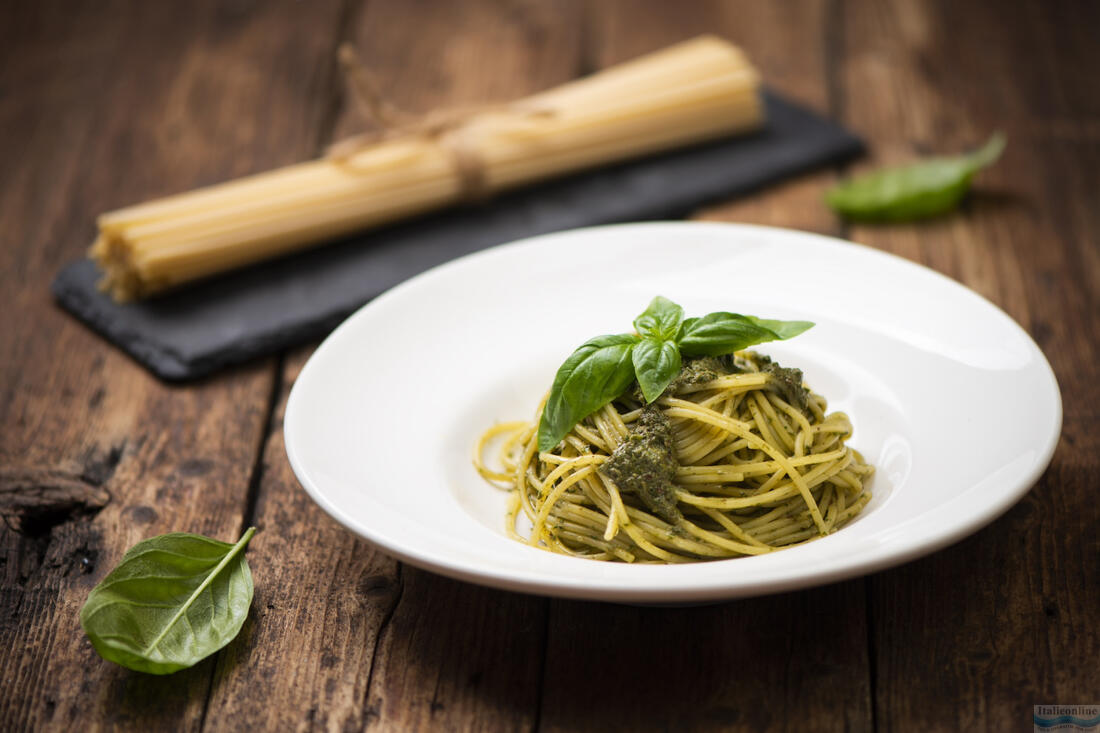Pesto as we know it today has its roots in Liguria, where its main ingredient, basil, has been cultivated for centuries. The first references to a pesto-like sauce date back to Roman times, when a sauce called 'moretum' was used, made from garlic, salt, cheese, herbs and olive oil. The modern version of pesto as we know it today began to develop in the 19th century, when basil began to be used as the main ingredient.
Traditional pesto alla Genovese is made with several key ingredients:
- Fresh basil: preferably small-leaved, typical of the Liguria region. Basil should be freshly picked and fragrant to give the pesto its characteristic flavour.
- Garlic: It adds a spicy note to the sauce.
- Pine nuts: These nuts are creamy and have a delicate flavour that complements the basil.
- Parmesan and Pecorino: The combination of these cheeses adds a rich and salty flavor to the sauce. Parmesan is milder, while Pecorino has a more pronounced and savory tone.
- Extra Virgin Olive Oil: Quality olive oil is key, adding smoothness and fullness to the sauce.
- Salt: Used to balance the flavour.
Pesto is traditionally prepared in a marble mortar and pestle. All the ingredients are slowly spread into a smooth paste. This process releases the essential oils from the basil and other ingredients, giving the pesto its typical intense flavour. Nowadays, however, pesto is often prepared in a blender, which is quicker but can change the texture and flavour of the sauce.

Pesto alla Genovese is most often used to flavour pasta, especially types such as trofie or trenette. Before serving, the pesto is usually thinned with a little pasta water to make the sauce creamier. In addition to pasta, pesto is also used as a seasoning for bruschetta, in soups (such as Minestrone), on pizza, or as a marinade for meat and fish.
Although pesto alla Genovese is a staple, there are many modern variations of this recipe. Some add other herbs to the pesto, such as arugula, bear garlic or spinach, nuts such as walnuts or almonds, or different types of cheese. Such variations are often used for various culinary experiments, but the traditional pesto alla Genovese remains the most popular.







